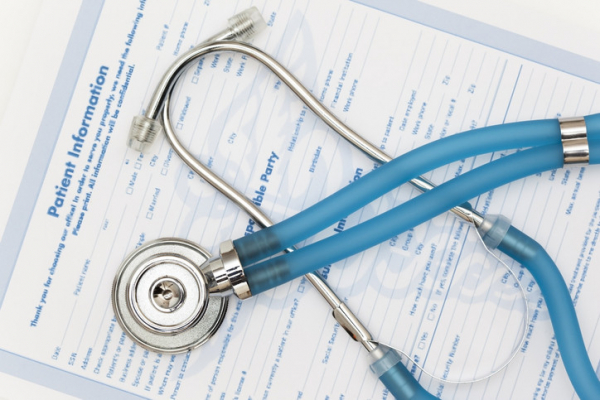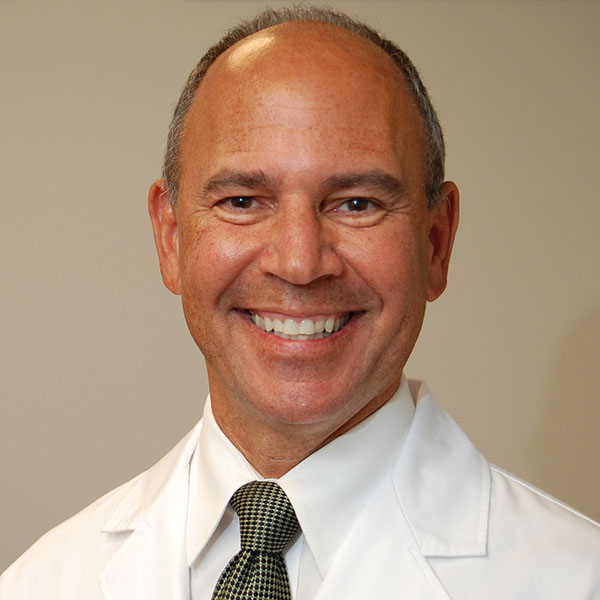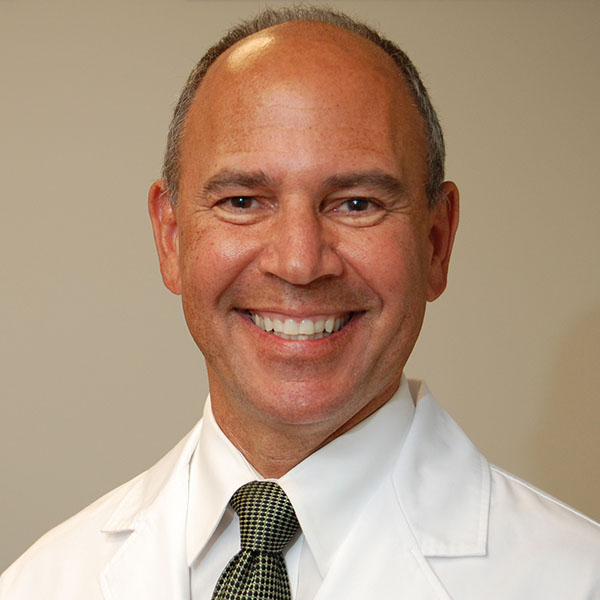
New urine test may help some men with elevated PSA avoid biopsy

When a prostate-specific antigen (PSA) blood test produces an abnormal result, the next step is usually a prostate biopsy. A biopsy can confirm or rule out a cancer diagnosis, but it also has certain drawbacks. Prostate biopsies are invasive procedures with potential side effects, and they often detect low-grade, slow-growing tumors that may not need immediate treatment — or any treatment at all.
Researchers are exploring various strategies for avoiding unnecessary biopsies. Specialized magnetic resonance imaging (MRI) scans, for instance, can be useful for predicting if a man’s tumor is likely to spread. A blood test called the Prostate Health Index (PHI) measures various forms of PSA, and can help doctors determine if a biopsy is needed.
In April, researchers at the University of Michigan published results with a test that screens for prostate cancer in urine samples. Called the MyProstateScore 2.0 (MPS2) test, it looks for 18 different genes associated with high-grade tumors. “If you’re negative on this test, it’s almost certain that you don’t have aggressive prostate cancer,” said Dr. Arul Chinnaiyan, a professor of pathology and urology at the University, in a press release.
Gathering data and further testing
To create the test, Dr. Chinnaiyan and his colleagues first turned to publicly-available databases containing over 58,000 prostate cancer-associated genes. From that initial pool, they narrowed down to 54 genes that are uniquely overexpressed in cancers classified as Grade Group 2 (GG2) or higher. The Grade Group system ranks prostate cancers from GG1 (the least dangerous) to GG5 (the most dangerous).
The team tested those 54 genes against archived urine samples from 761 men with elevated PSA who were scheduled for biopsy. This effort yielded 18 genes that consistently correlated with high-grade cancer in the biopsy specimens. These genes now make up MPS2.
Then the team validated the test by performing MPS2 testing on over 800 archived urine samples collected by a national prostate cancer research consortium. Other researchers affiliated with that consortium assessed the new urine test’s results against patient records.
Interpreting the results
Study findings showed that MPS2 correctly identified 95% of the GG2 prostate cancers and 99% of cancers that were GG3 or higher. Test accuracy was further improved by incorporating estimates of the prostate’s size (or volume, as it’s also called).
According to the team’s calculations, use of the MPS2 would have reduced unnecessary biopsies by 37%. If volume was included in the measure, then 41% of biopsies would have been avoided. By comparison, just 26% of biopsies would have been avoided with the PHI.
Dr. Chinnaiyan and his co-authors emphasize that ruling out high-grade cancer with a urine test offers some advantages over MRI. The specialized multi-parametric MRI scans needed to assess high-grade cancer in men with elevated PSA aren’t always available in community settings, for instance. Moreover, the interpretation of mpMRI results can vary from one radiologist to another. Importantly, the MPS2 can be updated over time as new prostate-cancer genes are identified.
Commentary
Dr. Boris Gershman, a urologist at Harvard-affiliated Beth Israel Deaconess Medical Center in Boston, and a member of the advisory and editorial board for the Harvard Medical School Guide to Prostate Diseases, described the new study results as promising. “It does appear that the performance of the 18-gene urine test is better than PSA alone,” he says.
But Dr. Gershman adds that it will be important to consider how such a test will fit into the current two-stage approach for PSA screening, which entails prostate MRI when the PSA is abnormal. Where MRI delivers a yes/no result (meaning lesions that look suspicious for cancer are either present or not), the MPS2 provides numerical risk estimates ranging between 0% and 100%. “The challenge with clinical implementation of a continuous risk score is where to draw the line for biopsy,” Dr. Gershman says.
“This research is very encouraging, since many men in rural areas may not have access to prostate MRI machines or the added sophistication that is needed in interpreting these MRI scans,” says Dr. Marc Garnick, the Gorman Brothers Professor of Medicine at Harvard Medical School and Beth Israel Deaconess Medical Center. “A widely available urine test may eventually help provide more precision in determining who should undergo a prostate biopsy, and may also help to assess the probability that a cancer is clinically significant and in need of treatment.”
About the Author

Charlie Schmidt, Editor, Harvard Medical School Annual Report on Prostate Diseases
Charlie Schmidt is an award-winning freelance science writer based in Portland, Maine. In addition to writing for Harvard Health Publishing, Charlie has written for Science magazine, the Journal of the National Cancer Institute, Environmental Health Perspectives, … See Full Bio View all posts by Charlie Schmidt
About the Reviewer

Marc B. Garnick, MD, Editor in Chief, Harvard Medical School Annual Report on Prostate Diseases; Editorial Advisory Board Member, Harvard Health Publishing
Dr. Marc B. Garnick is an internationally renowned expert in medical oncology and urologic cancer. A clinical professor of medicine at Harvard Medical School, he also maintains an active clinical practice at Beth Israel Deaconess Medical … See Full Bio View all posts by Marc B. Garnick, MD

What? Another medical form to fill out?

You’re in a doctor’s office with a clipboard and a pile of medical forms on your lap. For the umpteenth time, you must now jot down your medical history — conditions, ongoing symptoms, past procedures, current medications, and even the health of family members.
But how much information should you include? Which details are most important? And why are you slogging through paper forms when a digital version likely exists? Put down your pen for a moment and take a breath. We have some answers.
Do you actually need to fill out the forms again?
In many cases, you do need to fill out medical history forms. That can be true even if you already have a digital record on file, known as an electronic medical record (EMR) or electronic health record (EHR).
The reason for collecting new information could be due to a variety of reasons:
- The health care provider might want an update, since information like medications or new health problems can change over time, or you might have missing or inaccurate information in your record.
- Different specialists need to know about different aspects of your health.
- Your EMR at one provider’s office might not be accessible to others because practices don’t always have compatible computer software.
- Some practices don’t want to rely on records created by other practices. They may not trust that they’re accurate.
What if you don’t want to fill out the forms?
“You don’t have to,” says Dr. Robert Shmerling, a rheumatologist and senior faculty editor at Harvard Health Publishing. “But the response from the practice might be, ‘How can we provide the best care if you don't provide the information?’ And if you persist, you run the risk of marking yourself — unfairly, perhaps — as uncooperative.”
What are the most important details in your medical history?
The most important details of your medical history include
- chronic or new symptoms and conditions
- past surgeries
- family medical history
- insurance information
- current prescription and over-the counter medicines, supplements, vitamins, and any herbal remedies or complementary medicines you use
- medication allergies
- vaccination history
- any screening tests you’ve had, so they won’t be prescribed unnecessarily
- any metal implants you have, which could affect screenings.
If you don’t know all of the details, try to get them from a previous doctor or hospital you’ve visited.
“In some cases, not having the information could be a problem. For example, I need to know if my patients have had certain vaccines or if they have medication allergies,” says Dr. Suzanne Salamon, associate chief of gerontology at Harvard-affiliated Beth Israel Deaconess Medical Center.
Which information might be less important?
Sometimes, leaving out certain details might not matter, depending on the purpose of your health visit. For example, your eye doctor doesn’t need to know that you broke your wrist when you were 18, had the flu last year, or had three C-sections. But they should know which medicines and supplements you take, and whether you have certain health conditions such as diabetes or high blood pressure.
Not sure what to leave in or out of your history? Dr. Salamon suggests that you at least focus on the big stuff: chronic symptoms and conditions that need ongoing treatment, medications and supplements you’re taking, and your family medical history.
“If you can, bring a copy of your medical history to all new doctor appointments. It could be written or printed from your patient portal or kept handy on a digital health app. That way, you’ll have it handy if you need to fill out medical forms or if the physician asks you questions about your medical history during an appointment,” Dr. Salamon advises.
How secure is the information you’re providing?
We trust health care professionals with our lives and our most private information, including our social security numbers (SSNs). SSNs are used to double-check your identity to avoid medical errors, and to make sure your insurance information is accurate and practices get paid.
Is it really safe to hand over the information? It’s supposed to be. A federal law called the Health Insurance Portability and Accountability Act (HIPAA) protects your health information with very strict rules about who can access it and how it can be shared.
“Medical practices take this very seriously,” Dr. Shmerling says. “They have lots of safeguards around personal health information, and routinely warn medical staff about not looking at or sharing information inappropriately — with the threat of being fired immediately if they do. Electronic health records usually track those who look at our information, so it's often not hard to enforce this.”
But no hospital or other entity can guarantee that your information is protected. That’s true of all information, especially with the constant threat of cyberattacks.
“So if you feel strongly about it, you can try saying that you’d rather not provide certain information and ask whether the practice can explain why it’s necessary,” Dr. Shmerling says. “It takes a certain amount of trust in the system that personal health information will be kept private, even though that may feel like taking a leap of faith.”
About the Author

Heidi Godman, Executive Editor, Harvard Health Letter
Heidi Godman is the executive editor of the Harvard Health Letter. Before coming to the Health Letter, she was an award-winning television news anchor and medical reporter for 25 years. Heidi was named a journalism fellow … See Full Bio View all posts by Heidi Godman
About the Reviewer

Howard E. LeWine, MD, Chief Medical Editor, Harvard Health Publishing
Dr. Howard LeWine is a practicing internist at Brigham and Women’s Hospital in Boston, Chief Medical Editor at Harvard Health Publishing, and editor in chief of Harvard Men’s Health Watch. See Full Bio View all posts by Howard E. LeWine, MD

Have you exfoliated lately?

Social media has a way of making the ho-hum seem fresh and novel. Case in point: exfoliation, the process of removing dead cells from the skin’s outer layer. Anyone scrolling through TikTok lately might be convinced this longtime skin care approach can transform something old — let’s say our aging epidermis — into like-new skin.
But a Harvard dermatologist says that’s asking too much.
“I don’t think exfoliation is going to fix anybody’s wrinkles,” says Rachel Reynolds, MD, interim chair of dermatology at Harvard-affiliated Beth Israel Deaconess Medical Center. While exfoliation offers definite benefits, it can also irritate and inflame the skin if you don’t do it carefully, or use tools or chemicals your skin doesn’t tolerate.
How is exfoliation done?
There are two main ways to exfoliate: mechanical and chemical. Each boasts specific advantages.
- Mechanical (or physical) exfoliation uses a tool such as a brush or loofah sponge, or a scrub containing abrasive particles, to physically remove dead skin cells. “Mechanical exfoliation can improve skin luster by taking off a dead layer of skin that can make it look dull,” Dr. Reynolds says. “And it can help unclog pores a bit, which can reduce some types of acne.”
- Chemical exfoliation uses chemicals — often alpha and beta hydroxy acids or salicylic acid — to liquify dead skin cells. “Chemical exfoliants work on a more micro-level to help dissolve excess skin cells and reduce uneven pigmentation sitting at the surface of the skin,” she explains. “They also restore skin glow, improve acne, and give the skin a little more shine.”
Why do skin care products so often promote exfoliation?
Perhaps hundreds of commercially available skin care products — from body washes to cleansers to face masks — are labeled as exfoliating, Dr. Reynolds notes. But she’s skeptical about why such a wide array of items plug this feature so prominently.
“It’s advantageous for a cosmetics company to sell consumers more products in a skin care line,” she says. “But it’s buyer beware, because this is a completely unregulated market, and cosmetic companies can make claims that don’t have to be substantiated in actual clinical trials.”
Do we need to exfoliate our skin?
No. “Nothing happens if you don’t exfoliate — you just walk around with bumpy or slightly dry skin, which is inconsequential except for cosmetic reasons,” Dr. Reynolds says.
“No one has to exfoliate, but it can be helpful to exfoliate the arms and legs,” she adds. “As we age, these areas get more dry than other parts of the body, and people notice they build up a lot more flaking skin and an almost fish-scale appearance.”
That phenomenon may or may not be a sign of keratosis pilaris, a common but harmless skin condition characterized by rough, bumpy “chicken skin” on the upper arms and thighs. Physical exfoliators are a good first choice because keratosis pilaris covers areas that have tougher skin than the face, she says. But it’s fine to use a cleanser or lotion containing a chemical exfoliant instead. Either type can improve skin texture and the skin’s appearance.
Can exfoliation harm our skin?
Yes. Both physical and chemical exfoliation techniques can do more harm than good, depending on several factors. Sensitive skin is more likely to become irritated or inflamed by any exfoliant. And overdoing it — whether by rubbing too hard or using a product with higher concentrations of acid — can trigger irritant contact dermatitis, which can look red, angry, and chapped.
“Physical exfoliation that’s done too harshly can also aggravate inflammatory acne, making it worse,” Dr. Reynolds says. “Also, exfoliating can make you more prone to sunburn.”
What are the safest ways to exfoliate?
Dr. Reynolds recommends chemical exfoliants over physical versions. “Sometimes the abrasives in those apricot scrubs, for example, can go too far, aggravating the skin and creating inflammation,” she says.
She offers these additional tips to exfoliate safely:
- If you haven’t exfoliated before, start with a simple washcloth to determine how well your skin responds to mild attempts at physical exfoliation.
- Then try gentler chemical exfoliants, such as lower concentrations of hydroxy acids or salicylic acid. Work your way up to stronger concentrations only if needed.
- If you’re hoping to eradicate stubborn skin problems such as melasma (brown facial patches) or comedonal acne (small, skin-colored bumps often on the forehead or chin), consider undergoing a chemical peel at a dermatologist’s office.
Don’t exfoliate every day. “At most, do it two or three times a week,” Dr. Reynolds says. “Your skin needs to repair itself in between exfoliation episodes.”
About the Author

Maureen Salamon, Executive Editor, Harvard Women's Health Watch
Maureen Salamon is executive editor of Harvard Women’s Health Watch. She began her career as a newspaper reporter and later covered health and medicine for a wide variety of websites, magazines, and hospitals. Her work has … See Full Bio View all posts by Maureen Salamon
About the Reviewer

Howard E. LeWine, MD, Chief Medical Editor, Harvard Health Publishing
Dr. Howard LeWine is a practicing internist at Brigham and Women’s Hospital in Boston, Chief Medical Editor at Harvard Health Publishing, and editor in chief of Harvard Men’s Health Watch. See Full Bio View all posts by Howard E. LeWine, MD